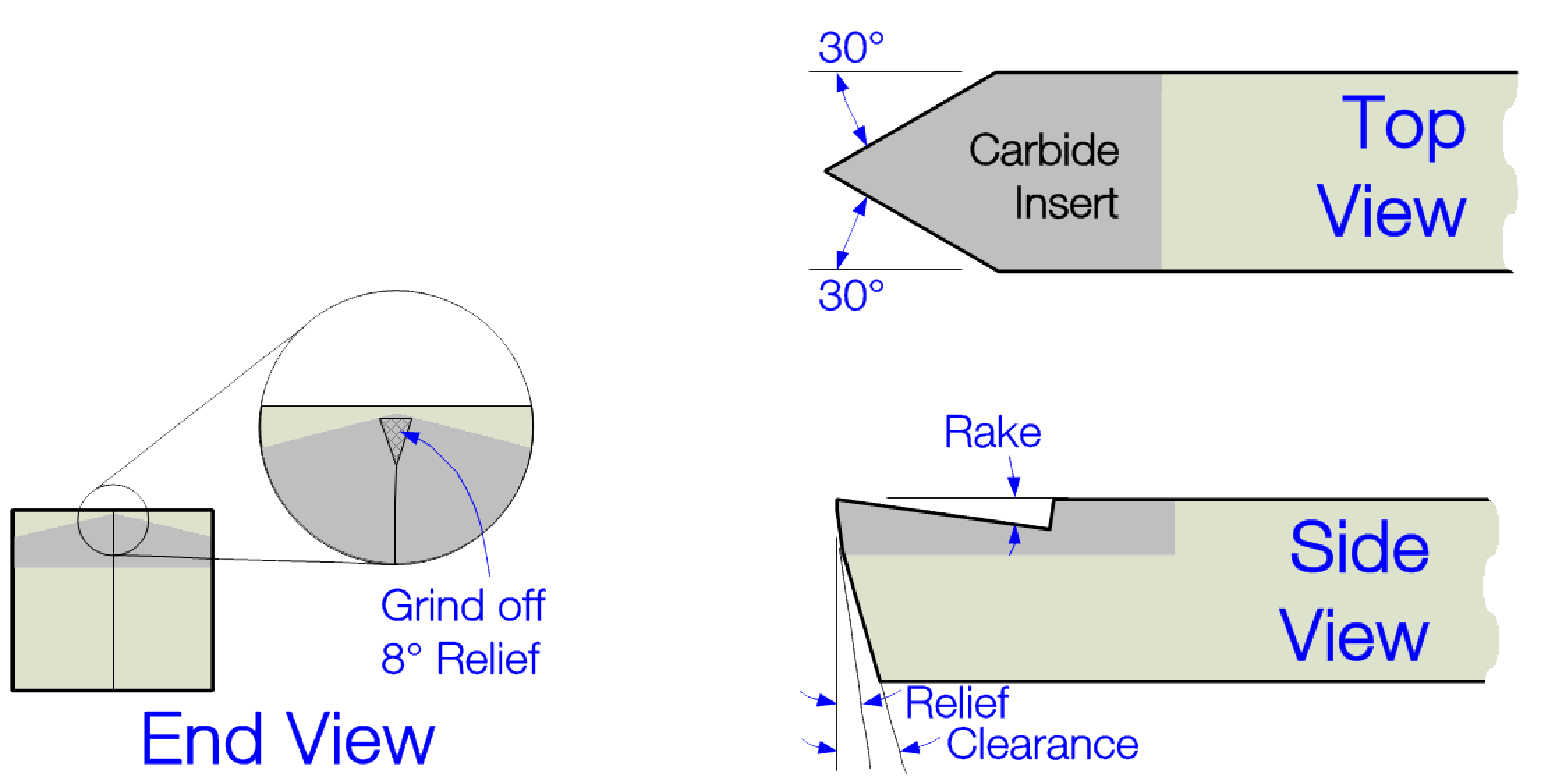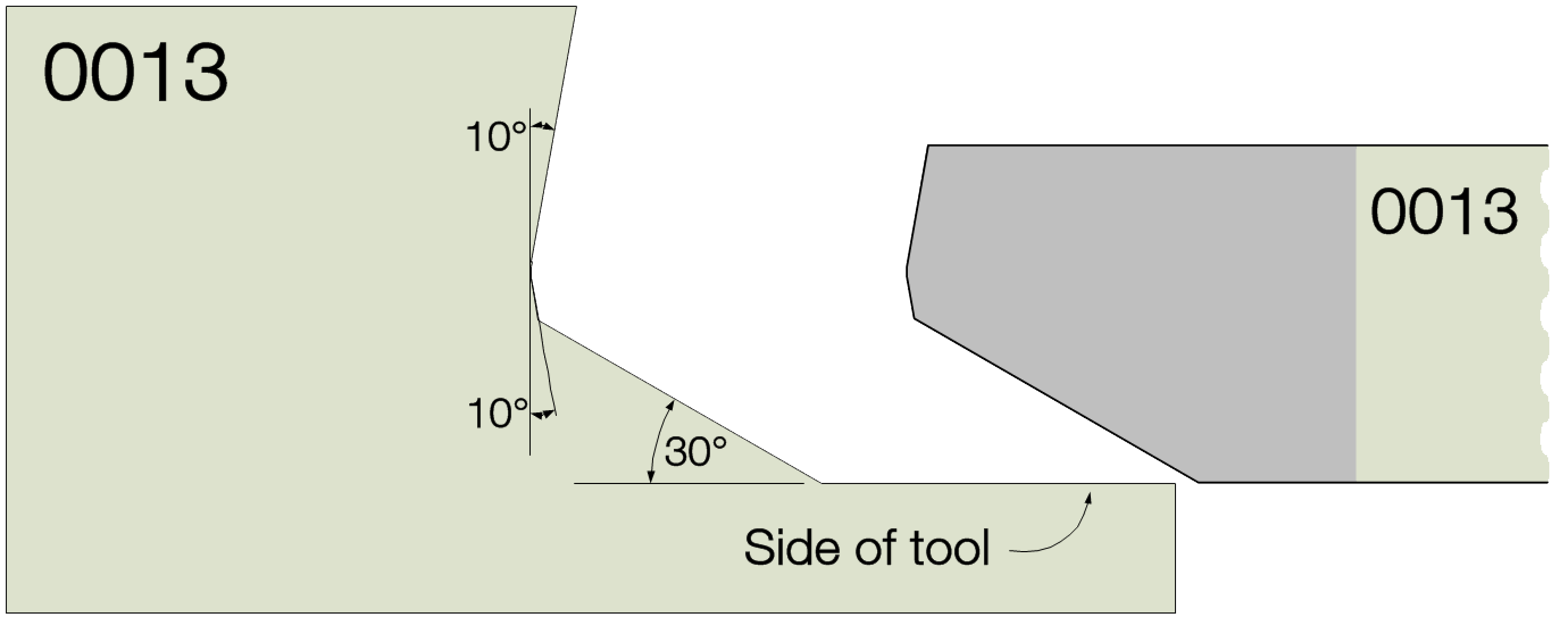

|
|
Metal Lathe Tools: Threading Tools |
* Temperature at which the tool material begins to soften appreciably. For HSS, it depends on the level of cobalt in the HSS.
|
|||||||||||||||||
Angles shown are good for hobbyists; grinds for production shops should consult a specialist.
When both a relief and a clearance angle are outlined (e.g., Side Relief and Front Relief), this is done to facilitate easier resharpening. It is analogous to Secondary Bevels on woodworking chisels.
Resharpening should be done when the wear land reaches 1.5 mm (1/16 inch) high.
Angles shown are the effective angles, not the ground angles. Effective angles are increased or decreased, based on the angle by which the tool is presented against the work. Additionally, the vertical alignment of the tool (vs. the center line of the work) can also change the effective Front Relief Angle.
All angles are given the nomenclature designated by the American Standards Association (ASA).
|
Tool Shape - 60° Threading Tool |
||||||
|---|---|---|---|---|---|---|

The flattening off of the Nose is to allow for more support under the tip of the grind, helping to prevent shear in carbide insert. The width of that grind should be no wider than allowed for the defined thread. This is not necessary in HSS, but could be a good practice to extend tool life as dulling will happen later. |
||||||
|
Back Rake |
Side Cutting Edge Angle |
Nose Flat Width |
Nose Flat Angle |
Relief Angle |
Clear-ance Angle |
Comments |
| 8° |
30° (both sides) |
based on thread pitch |
8° | 8° | 16° | |
If grinding this on a high speed grinder, be sure to manage the temperature so that the temper is not lost due to overheating. If there is a carbide insert, DO NOT cool by dipping in water. This will cause the carbide to crack due to shocks. Otherwise, cool by dipping as needed in water.

Contour Gauge
For resharpening, a contour gauge like shown to the left is recommended. One should be made for each tool, and it should be numbered to match the tool's number.